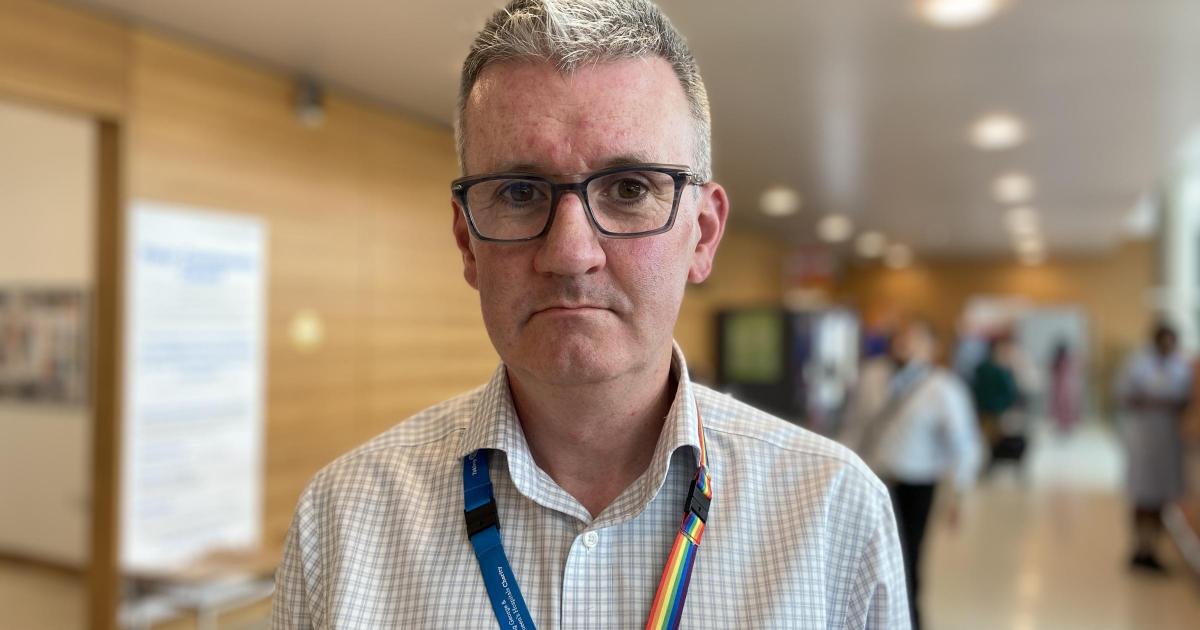The number of caesarean sections (C-sections) has “shot up”, said chief executive Matthew Trainer, with the annual figure rising by a third in the past four years.
In an exclusive interview, the boss of Barking, Havering and Redbridge University Hospitals NHS Trust (BHRUT) – which runs Queen’s – said he expects the maternity unit will fail to achieve a ‘good’ rating when its next inspection report is published.
Staff are dealing with increasing numbers of mothers with health problems and language barriers, he said – and while Britain’s national birth rate is expected to fall in the coming years, east London’s is predicted to continue rising.
The maternity unit was inspected last year by health watchdog Care Quality Commission (CQC), but the results have not yet been published.
“We will probably get another inspection this year,” said Mr Trainer. “I don’t think the overall rating will be any better.”
The maternity unit is currently rated ‘requires improvement’, based on a 2021 inspection.
Asked why he did not expect the rating to improve, he pointed to “the demand the service is under”.
However, he stressed that the unit is safe, despite CQC saying its safety ‘requires improvement’.
“There’s no data that suggests the outcomes we get are any worse than anywhere else in the country,” said Mr Trainer.
“We’ve got more midwives working here than the trust has ever had – and by quite a size, actually.”
The vacancy rate in the maternity unit has dropped from around 20 per cent to 7pc.
But with around 7,000 babies delivered per year, he said, the triage service is still “under really, really high pressure and demand”.
“We’ve put extra medical staffing into that overnight recently and extra nursing staff, to try to make sure we’re managing the risks there as well as possible,” said Mr Trainer.
“But I think, hand on heart, I’d expect after the next inspection it would still be requires improvement and I think there’s still more for us to do.”
In addition to an under-pressure triage service, said Mr Trainer, the Labour Ward itself is sometimes “absolutely packed out”.
Three inquests have been opened at East London Coroner’s Court since late last year into the deaths of babies born at Queen’s Hospital, amid concerns over the treatment provided (Image: Charlotte Anderson) Read more:
Meanwhile, said Kathryn Tompsett, clinical group director for women’s and children’s services, demand for C-sections rose from 2,270 in 2020 to 3,005 in 2024 – a 33pc increase.
“Some of it is increased medical complexity,” she said. “So, people being less healthy when they come into a pregnancy, which means they’re more likely to need an intervention.”
Analysis of the worst outcomes – stillbirths, babies having to be admitted to the neonatal unit after delivery, mothers suffering haemorrhages, and so on – have found a link to poverty or deprivation.
“We’ve found that there are some particular postcodes in the Ilford area where we’ve seen little clusters of women who have babies who have slightly poorer outcomes,” said Mrs Tompsett.
“Obviously, deprivation is a factor in this,” said Mr Trainer. “The very best outcomes tend to be for women who’ve got no pre-existing health conditions. The more you move away from that, the higher the degree of risk you carry.”
Around one in seven mothers seen by the unit now has diabetes, said Mrs Tompsett – the highest proportion in the unit’s history.
That is linked in part to the area’s large south Asian population, said Mr Trainer, which disproportionately suffers diabetes.
When emergency caesareans have to be carried out, he said, planned ones have to be put off – a factor which can impact on the unit’s CQC safety rating.
“If the trend we’ve seen in the last few years with regard to C-sections continues to increase in line with increased birth rate, at some point we’ll need another dedicated theatre at Queen’s in the next couple of years,” he said.
BHRUT has started diverting resources to the deprived areas linked to poor outcomes, with positive results starting to show, said Mrs Tompsett.
“A safe maternity service is one where you’ve taken all reasonable actions to minimise the risk,” said Mr Trainer.
“Even a service that the CQC might rate as good or outstanding, you would still expect there to be incidents in the course of a year. You would still expect there to be poor outcomes for a sad minority of cases.
“The question is, has the service done enough to try to prevent that happening wherever possible?
“We wouldn’t be surprised if we had the CQC back in again at some point in the next couple of months.
“If it was ‘requires improvement’ again, I would hope it was towards the top end of that, because we’ve made real progress.
“If it was anything below requires improvement, I would be really, really disappointed – and from what we know about the service, it would be really surprising.”
